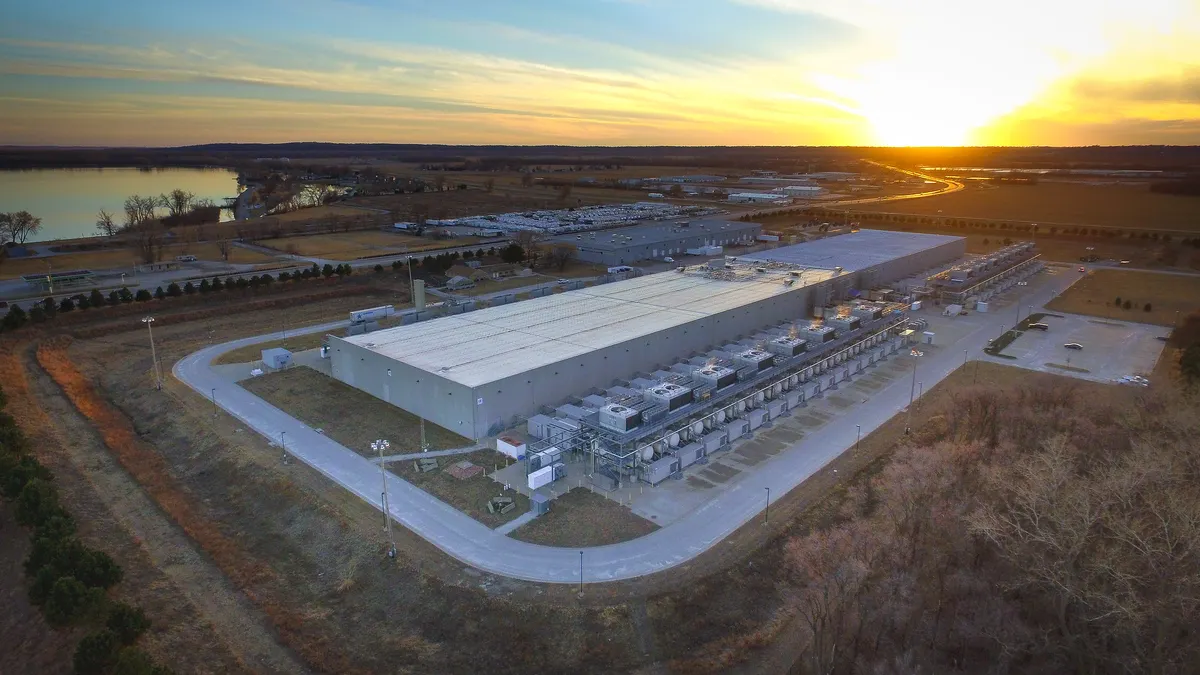It’s no secret the power sector faces many challenges. But while serious arguments swirl around the future of utility business models, cutting-edge technologies and wonky policy issues like rate design, there is another challenge that utilities face on a very regular basis that doesn't often make headlines: Animals.
From squirrels to jellyfish to a certain species of two-legged mammals, utilities have to share their service territories with critters who are not (usually) paying customers. And those critters can cause utilities some major headaches — such as the time when a single monkey took out an entire country’s grid.
Utilities will tell you planning for animal-related challenges on the grid is just part of the daily grind. Here are some of the animal problems they face.
Animal-induced blackouts
Forget about cyber hackers. Squirrels represent a far greater threat to the power grid, the anonymous creator of CyberSquirrel, a website that tracks squirrel-related outages, told the Washington Post.
Just ask any of the Wall Street traders who couldn’t trade roughly 20 million shares on the NASDAQ in 1987 when a squirrel took out one of their computer centers. That may be the most dramatic example, but squirrels are a real and frequent problem for utilities.
"[T]here is tons of hype about how we are at so much risk from a devastating cyber attack and yet we can't even protect our infrastructure from squirrels, or birds or snakes," the site's creator told The Post.
There were 89 outages related to squirrels this year, according to the Eaton Blackout Tracker, but it's not just them. Though they may be the furriest and nuttiest animal causing mayhem on the grid, snakes and raccoons can also do their fair share of damage. Animal-related outages overall are the number 5 cause of power outages in the U.S., according to Eaton, with 149 total outages this year.
Protecting a substation against animal intruders can cost upwards of millions, the Eaton report found. But beyond eliminating wildlife entirely, there’s not much a utility can do, except for finding ways to stop them dead in their tracks — humanely, of course. Some of these strategies include wrapping vulnerable parts of substations in polymer covering, as well as putting animal guards on poles and other materials to ward off curious critters.
Notably, zero blackouts caused by a cyberattack have been reported thus far in the past year. But blackouts aren’t the only headaches caused by animals.
Dam fish
Once you build something, it’s hard to keep animals away: Eagles like to perch on power lines. Squirrels and snakes climb into substations. If that wasn't hard enough, what do you do when you build something directly on an animal's home? Just ask the fish.
Hydro facilities have long threatened their migratory patterns and stream flow. Utilities in particular have often come under fire the ways dams impact trout streams and other aquatic life. Because many dams were built long before current environmental regulations, mitigation requirements today are more reactionary. But as Avista Corp., a Pacific Northwest utility in Washington, has found out, mitigating for aquatic species is just part of the job.
“[Fish] are part of the natural environment, right? [And] it’s part of our mitigation impact of dams,” Bruce Howard, Avista’s director of environmental affairs, told Utility Dive. Avista declined to give cost estimates, citing the complex accounting that goes into environmental mitigation. Fish can't mutiny, exactly, but eventually dams outlive their usefulness and are retired, freeing up the roadways ... or waterways, once more.
Concerns around aquatic life have even led some hydropower plants to be retired. Take the four hydroelectric dams in California and Oregon, which are involved in the biggest dam removal thus far. A coalition of tribes, environmental groups, and utilities including PacifiCorp hashed out a plan to begin a $450 million project to restore the river, streams and aquatic life by shutting down the dams.
The right perch
If you're an osprey or eagle looking for a nice and high perch for a nest, what better place can you find than a power pole? Well, that's not how utilities see it.
“Raptors are naturally drawn to power poles because they offer a high place to perch, roost, nest and hunt,” Jenna Shaver, a spokeswoman for Arizona Public Service Co., told Utility Dive in an email. “The large wing spans of raptors, however, make them vulnerable to harm by the electricity being carried on the power lines.”
It also makes them more vulnerable to feral cats, who might try to scale those poles in search of lunch, Shaver said. That’s especially bad if those species are endangered.
Sometimes a little gullibility also goes a long way. Putting animal guards on power poles and setting up false poles a little ways down from the real ones are two options to help mitigate for these issues, an Avista spokesperson told Utility Dive. APS has built platforms to relocate the nests to avoid an electrifying death for the chicks. Eventually, the birds warm to their new home, returning for years to the same nest, never realizing they were fooled.
Jellyfish go for nuclear option
For nuclear plants, jellyfish may be their biggest animal threat. Swedish operators scrambled to shut down a nuclear reactor two years ago after a bunch of spineless aquatics slipped through filters and clogged the plant's intake pipes.
That's not the first time that sea creatures have caused trouble for nuclear facilities. Pacific Gas & Electric’s Diablo Canyon nuclear plant — now slated for shutdown for unrelated reasons — also shuttered two of its reactors after gobs of sea salp, a type of plankton, jammed the pipes.
This isn’t a new phenomenon, by any means. (Nor is it a plot by the gelatinous creatures to take over the sea world.) But marine biologists have warned it could get worse due to the impacts of climate change.
“What we’ve seen as you increase temperature … you get massive blooms,” said Dr. Vicki Martin, a professor of biology at North Carolina State University. “Jellys seem to be liking this and increasing worldwide to the point they are clogging power plants. What happens that when you get these numbers of jellyfish continuously ... because there are so many of them, they clog the filters so they shut down.”
Over the past 15 years, summers have warmed with 2016 being the hottest summer on record so far. As temperatures rise, oceans absorb the excess heat, which also boosts temperatures. Since jellyfish thrive in warmer water, Martin says more blooms are likely on the way, including from species of jellyfish making their way into regions where they never lived before.
Her advice to nuclear plant operators? Install more filters.
Birds in the wind
Clean energy is great — until it kills things.
Take wind power: Researchers estimate monopole wind turbines kill between 140,000 and 328,000 birds in the U.S. every year. And the taller the poles, the more deadly the turbine.
Under the Migratory Bird Treaty Act, it’s illegal to kill protected birds, even if it’s accidental. So the stakes are high for wind turbine operators to prevent bird deaths. There are many ways that operators try to save birds with technology like radars and cameras.
But wind farms aren’t the only clean energy resource with a deadly side. Solar has done its fair share in sizzling creatures who venture too near.
Concentrated solar’s Icarus problem
It’s like the tale of Icarus, who flew too close to the sun, singed his wings and fell back to the earth. Only this time the real story is about the birds who flew too close to a solar farm in the Mojave desert.
Last year, the Wall Street Journal reported the Ivanpah concentrated solar project killed roughly 3,500 birds during its first year of operation, sparking concerns from environmentalists. The Los Angeles Times pegged the number of deaths a little higher — at 6,000 deaths a year.
According to the Los Angeles Times, the concentrated solar farm's operators have replaced the flood lights with LEDs, rearranged the mirrors and installed anti-perching spikes to the solar towers in hopes of reducing bird deaths.
Animal deaths caused by wind and solar may contain an element of spectacle, but renewables advocates are quick to point out they are much more humane than their fossil fuel counterparts. According to a U.S. News review of available literature, coal production and generation kills nearly 8 million birds annually, while wind and solar combine for less than 500,000.
Humans
Let's not forget what may be the most disruptive animal species of them all: Humans.
Most of you may remember the blimp that escaped its moorings last year, floating from Maryland to Pennsylvania and knocking out power for thousands along the way. It inspired memes, social media commentary and even a reference during the presidential primaries. (Then-candidate Mike Huckabee referred to the federal government as a "runaway blimp" at a Republican primary debate after the incident.)
While that may be a particularly notable incident, the most common human-related mishap on the grid is humans running their vehicles into power poles. According to the Eaton Report, 419 of outages were vehicle-related. Other than promoting responsible driving, there doesn’t appear to be any other deterrent.
But from cyber hacks to sniper attacks, not all human-related disruptions on the grid are accidental. Sometimes, a utility’s worst enemy can be the very people they serve.





















